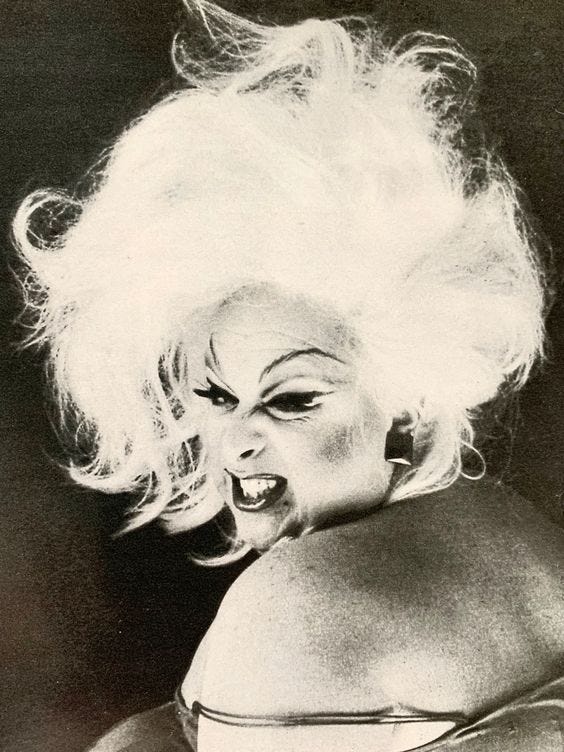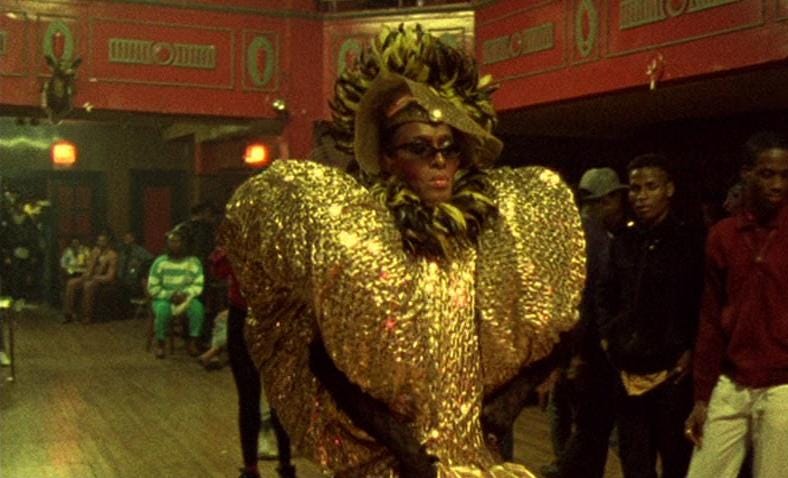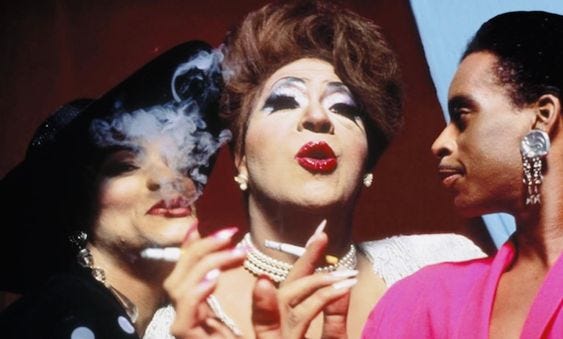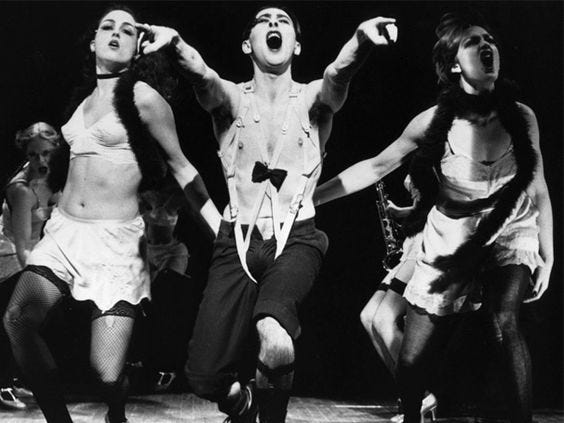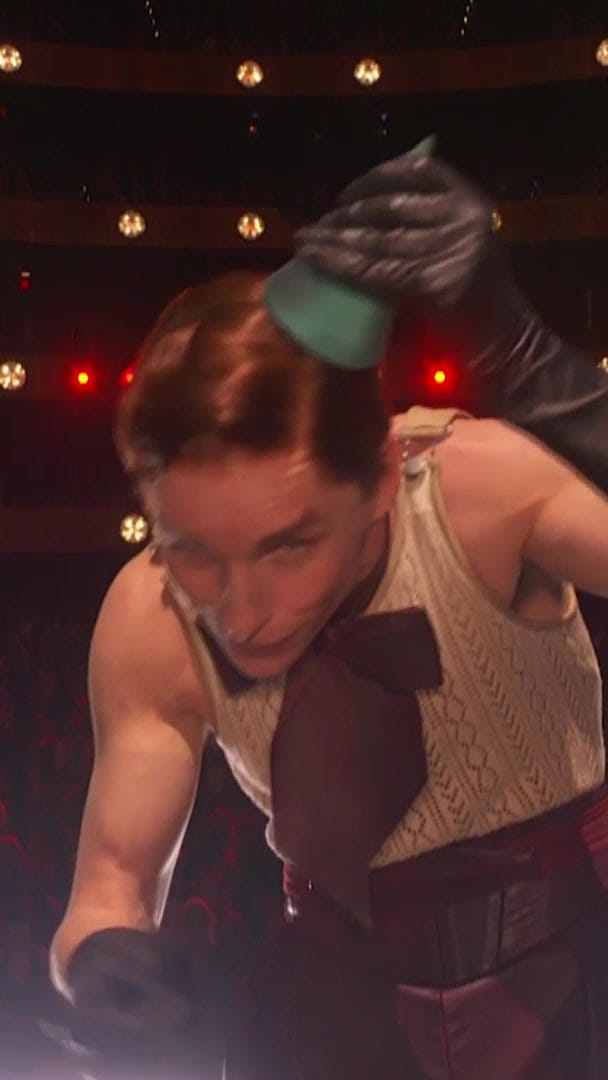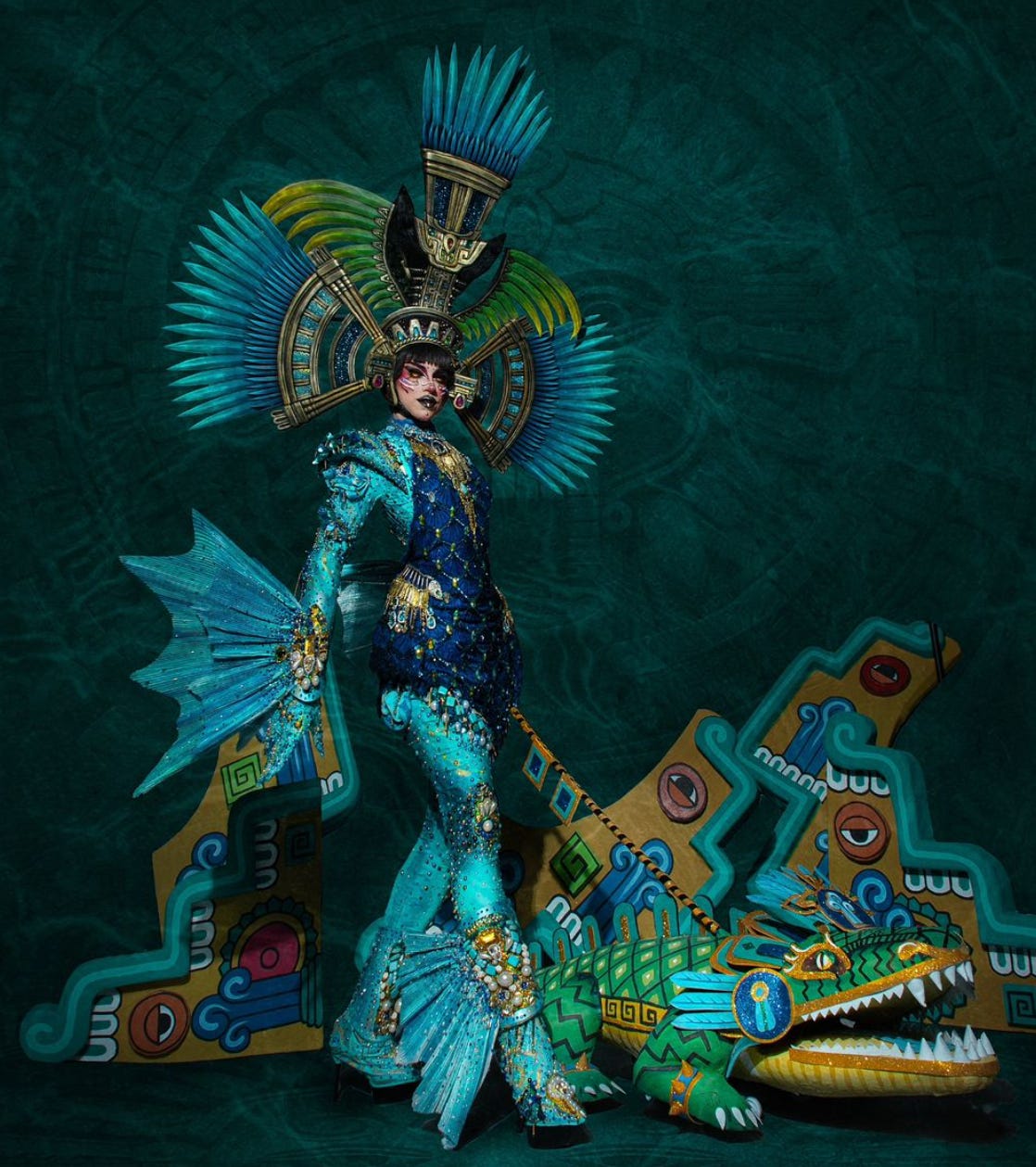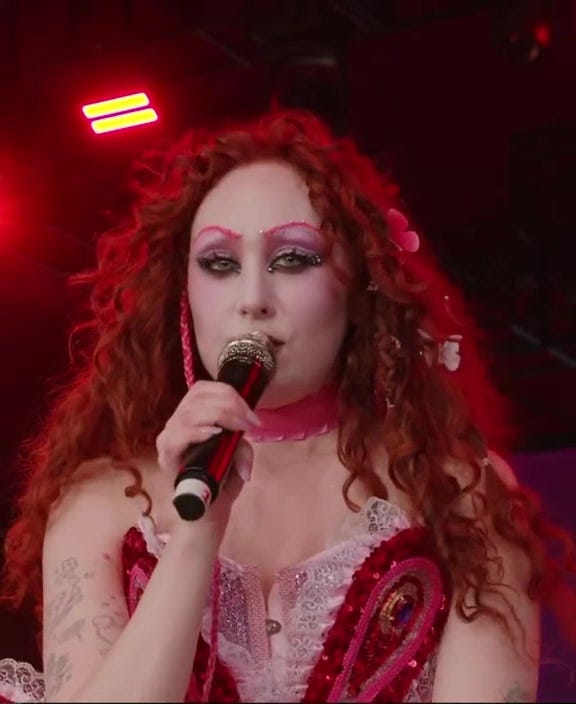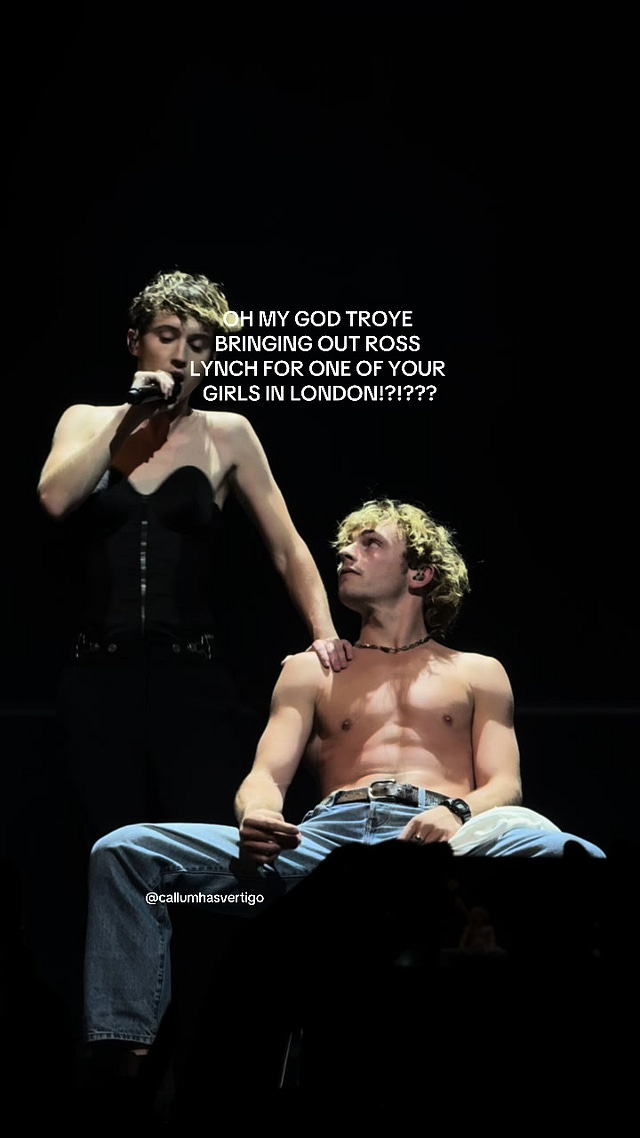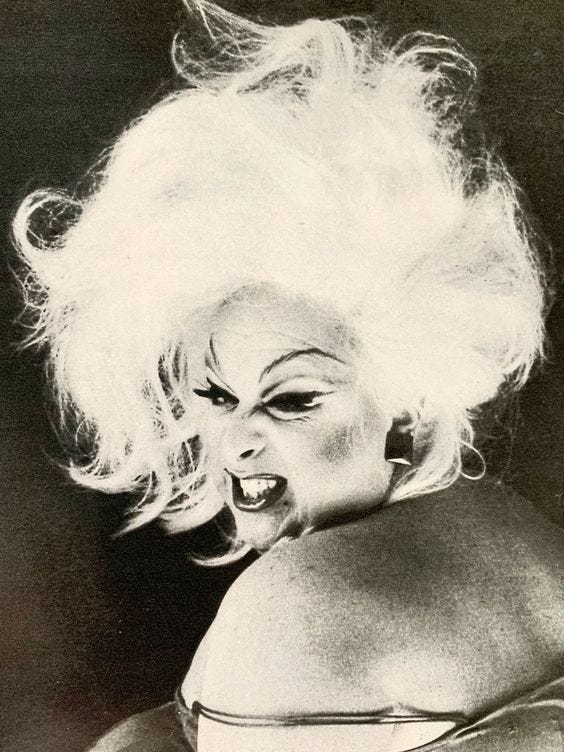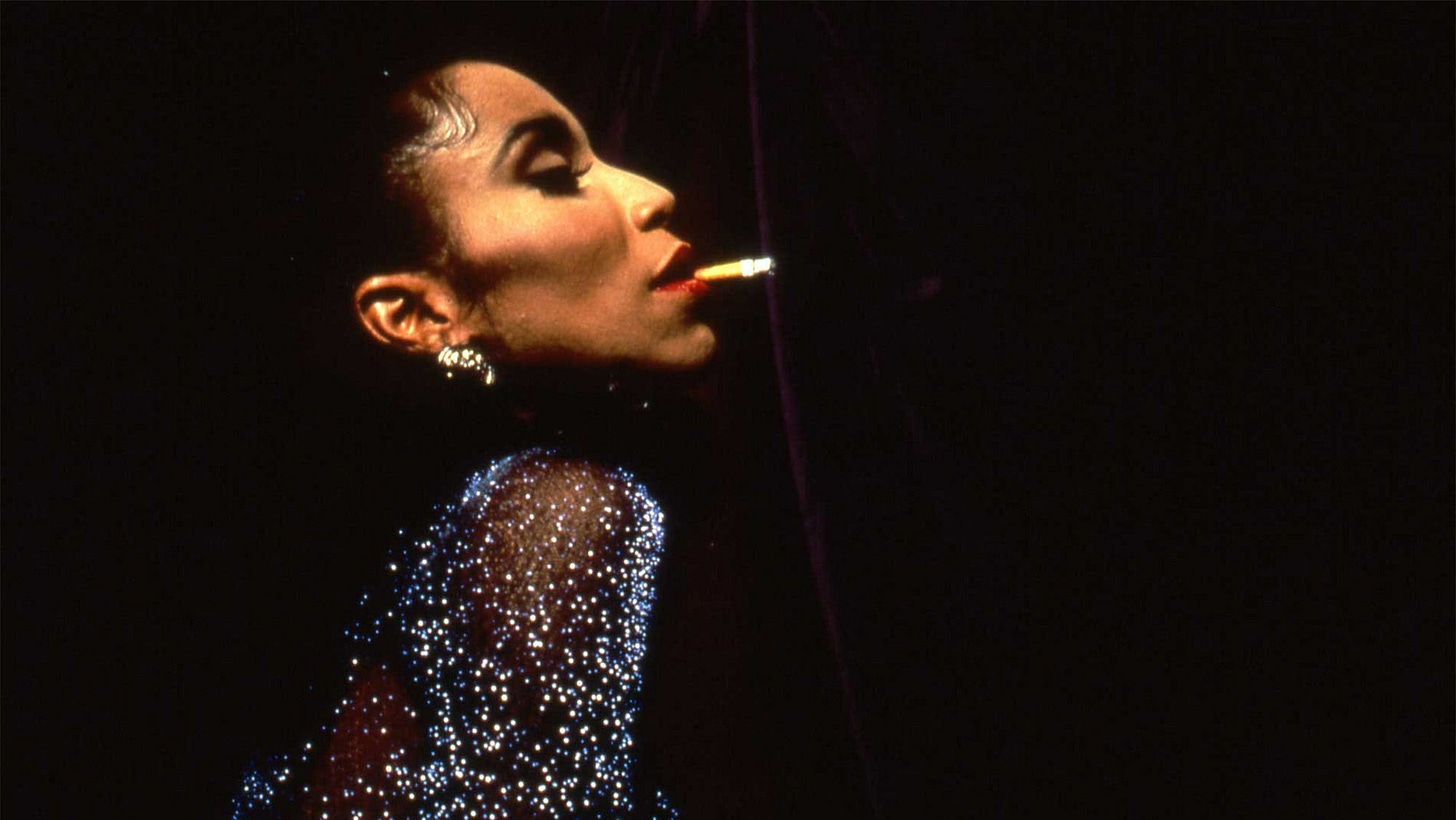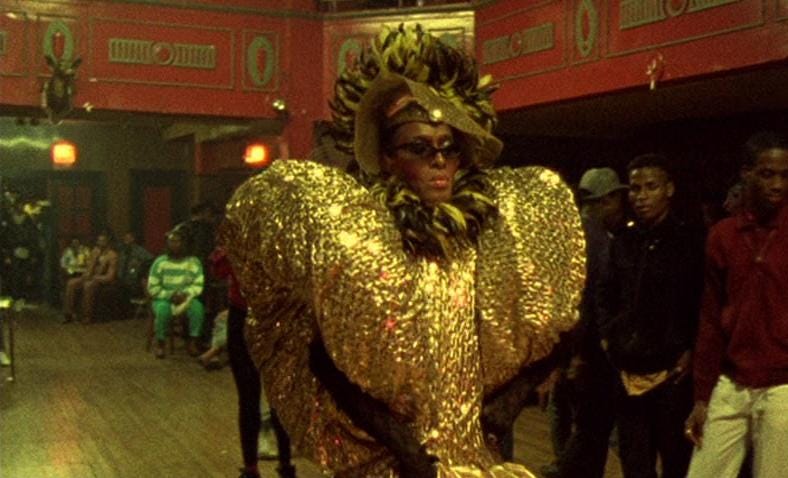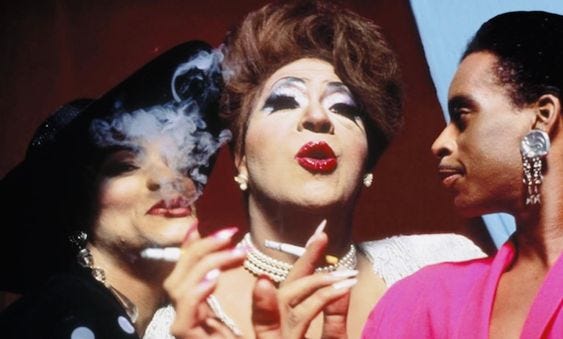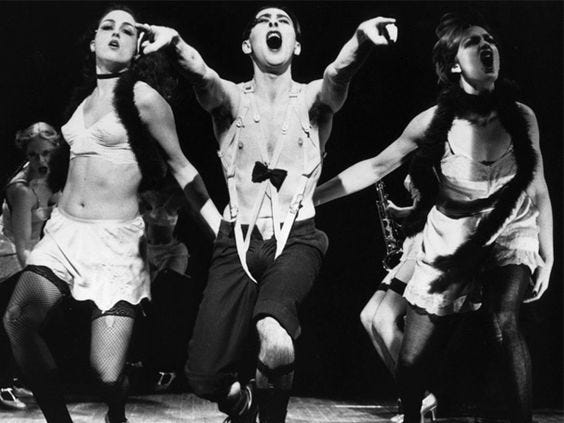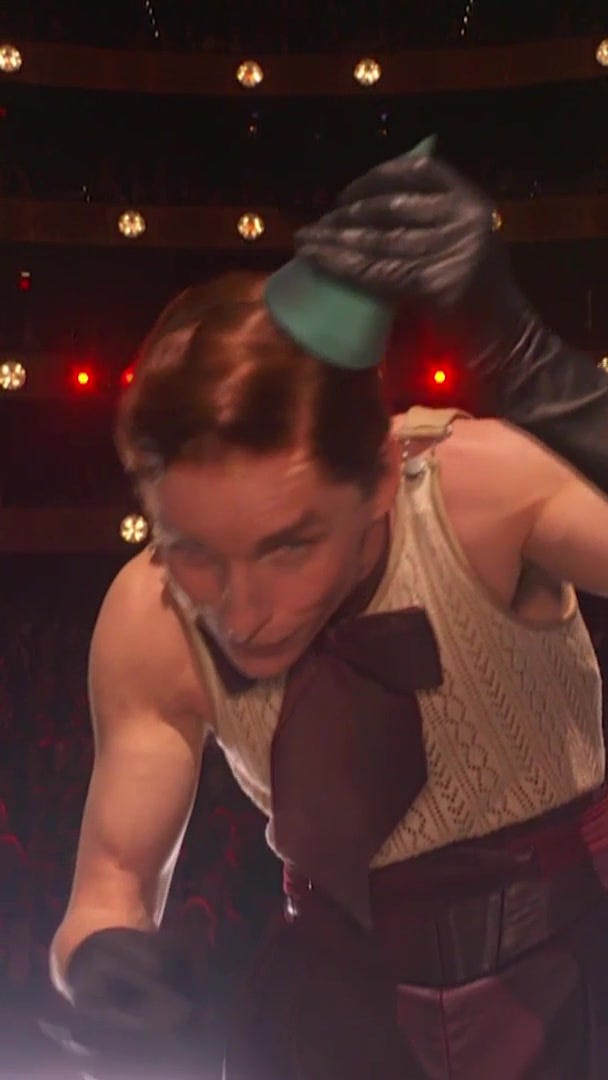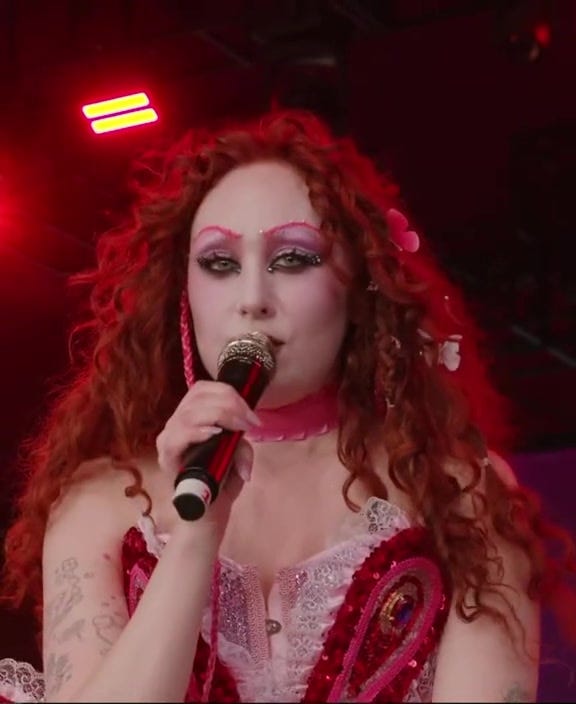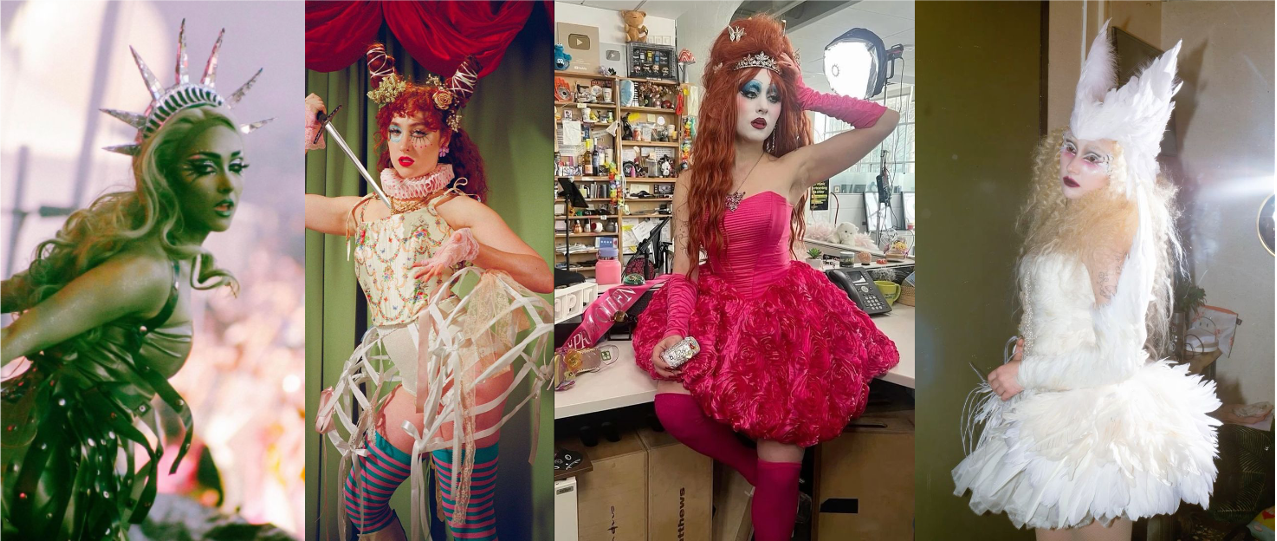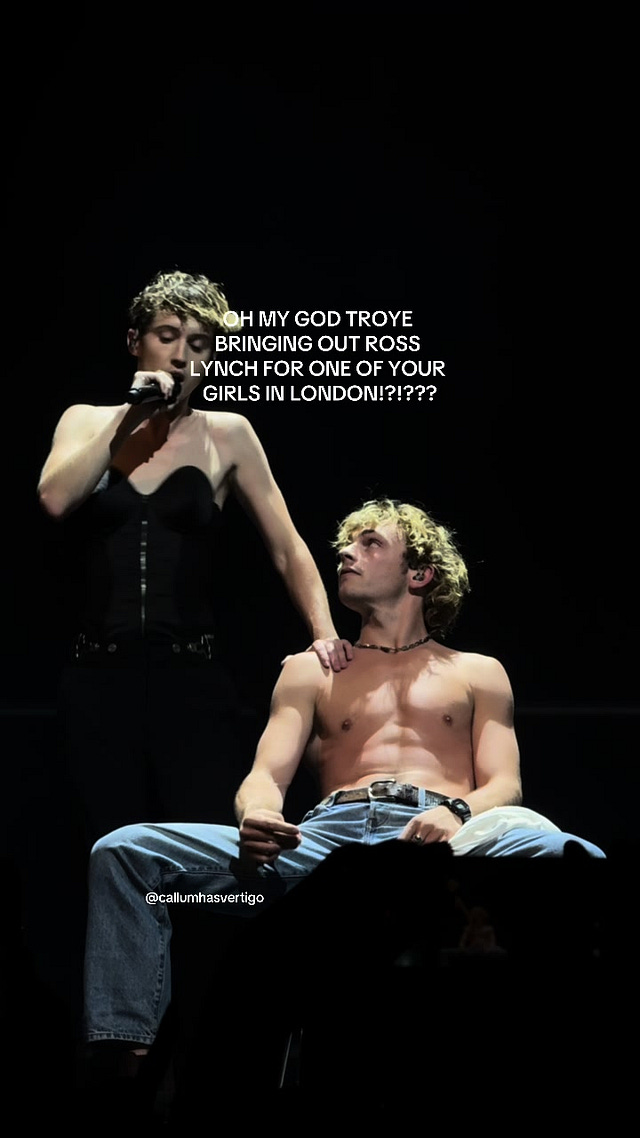On the stage in my heels is where I belong
Drag Queens, your favorite artist’s favorite artist and queer Popstars
I wanted to post this during Pride Month, but unfortunately, I couldn’t make it on time. Better late than never.
(Traducción en español al final)
The space between where the audience sits and the stage is so very narrow. People in the front row could even extend their arms and graze the spotlight, but they wouldn’t dare to step on it; the performer, the artist, met love in the lights hugging their skin and their voices filling a room. At the very beginning, stages were built for and by those who were not expected to aspire to excellence, who were expected to make peace with mediocrity, and instead, they wore their identities with pride, their act with greatness, and gained in return respect and admiration.
Unlike most places, the spotlight does not recognize where you come from, or who they think you are but who could you be up there. But, where I come from there are no built stages.
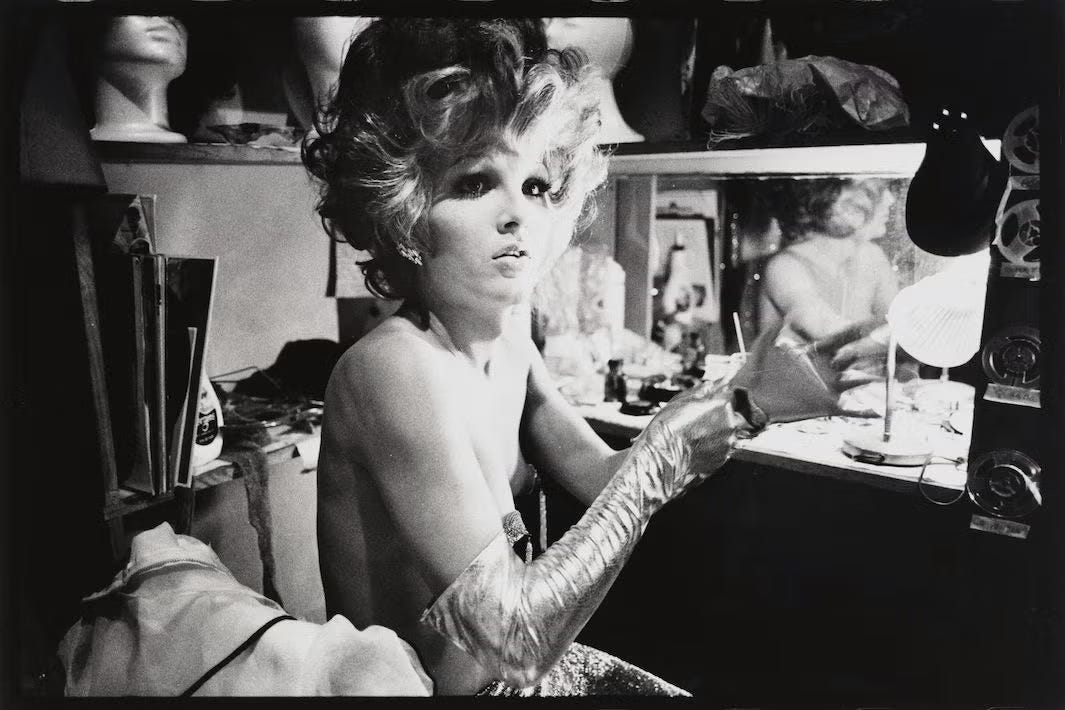
I was no more than 7 years old the first time I saw a Drag Queen, I enrolled in the local Carnaval contest dressed like a zombie and right next to me, the sunlight hit every single one of the pink sequins embedded in her dress, my ears were overpowered by her unshaken strut hitting the ground with a pair of heels four inches higher than what I thought the average person could manage. She kindly glanced at me and gasped, her right hand covered her mouth as if she had been frightened, I let out a light chuckle. Then and there, I realized for the first time what it meant to perform, even though there was no platform she showed me the stage is ground level.
When I’m interested in a certain topic I tend to collect as much information as my mind is able to and once I’ve reached a point where I cannot keep it in anymore I blurt all out to the nearest person, it might be my friend Alex, Beth, you or in this case my mum. I was talking to her about how drag amazes me: the makeup, the costumes, the characters, and — of course — their wittiness; how moldable it is and how it has a chameleonic-like approach according to who and where it is being performed. In the same conversation, I went back and forth from Divine to Sasha Colby, from Violet Chachki's iconic reveal to Anetra and Marcia Marcia Marcia's memorable lipsync, Trixie Mattel, Gigi Goode, Valentina, Plastique Tiara, Sasha Velour, while also partaking in the differences between the project American Drag Queens constitute in comparison with others, for example, Matraka from Ru Paul’s Drag Race Mexico or C-Pher from La Mas Draga. Shortly after I paused to regain my breath and organize my ideas to continue my rant, I was taken aback by one of her questions that I could not answer right away which led me to write this: “Who invented it?” followed by “In a sense, what is dragism?”
Drag-ism
She stuttered while formulating the latter and I did even more trying to answer it. Until that moment I’ve imprinted, if you will, an axiomatic nature to Drag; its roots are as ancient as theater itself, therefore I have given up on the “founders” visages and their names. However, the fact that she placed “-ism” at the end puzzled me.
According to the Cambridge Dictionary -ism is a suffix “used to form nouns that refer to social, political, or religious beliefs, studies, or ways of behaving”, on the other hand, Oxford Learner’s Dictionaries state the word origin is recalled from French -isme, via Latin from Greek -ismos, -isma, and is “the teaching, system or movement of”.
I like that word, movement.
Art is not exempt from time, others might even affirm it is a product of it, nevertheless an art movement is defined by a period of time and a group of artists sharing style, techniques, features, and philosophy. There are — debatably — around 30 to 48 major art movements, most of which have transcended the dimension of the painting or the book into fashion, makeup, mannerisms, and ultimately the social perception of the world.
In this day and age with all these different movements and trends being born and dying within a two-week rate, how true would it be to presume that Drag is part of the most eminent?
It wasn’t until the 19th century the word “drag” was used in connection with performing in clothes or a persona different from your own gender. In 1870, the Reynolds Newspaper in the United Kingdom printed the word in a gender-bending context in reference to a party imitation of “We shall come in Drag”, which means men wearing women’s costumes; this definition probably originated in the theater in the late 1800s when male performers wore petticoats to perform as women, their petticoats would drag on the floor and so they referred to dressing up as women as putting on their “drags”. Trixie Mattel Explains the History of the Word 'Drag'. InQueery.
Drag is not a movement per se, it is an art form of its own, but the social dynamism it has originated in the last couple of decades is undeniable in the name of the efforts of the LGBTQI+ community, the legacy of drag balls and, whether you like to admit it or not, The Queen of Drag: RuPaul.
“RuPaul invented it. She invented the Drag Superstar, she invented the idea of it and continues to reinvent it. We are alive at the time of a master. It’s incredible when you really think about RuPaul, and I dare you to do it.” Trixie Mattel on RuPaul
 Tiktok failed to load.
Tiktok failed to load.Enable 3rd party cookies or use another browser
Your favorite artist’s favorite artist
Drag can be a protest, a punch line, or a performance. It possesses a uniqueness that emerging Popstars recognize and are adapting into their craft. Just have a look at Troye Sivan's music video “One of Your Girls” or my personal favorite, Chappell Roan who has served look after look after look and is not done yet. Lil Nas X, Renné Rapp, Towa Bird, Conan Gray, The Last Dinner Party, Ethel Cain, Arlo Parks, Kim Petras, just to mention a few. I daresay we haven’t had this much queer media excellence since 1972 David Bowie or 2011 Lady Gaga, which is already a one-time event.
Queer artists are taking over the industry and we love it!!
Tell me if I’m missing someone. Byeee
Read my latest post!!
Traducción
(Quería postear esto en Pride Month pero ya no me dio tiempo, mas vale tarde que nunca)
El espacio entre la audiencia y el escenario es muy estrecho. Las personas sentadas en primera fila podrían incluso extender sus brazos y rozar el spotlight, pero no se atreverían a pararse debajo de él; el performer, el artista, se enamoró de las luces abrazando su piel y su voz llenando el espacio.
En un inicio, los escenarios fueron construidos por y para aquellos de quien no se esperaba que aspiraran a la excelencia, de los que se esperaba que hicieran las paces con la mediocridad, pero que en su lugar, vistieron sus identidades con orgullo, un acto con grandeza y a cambio consiguieron respeto y admiración.
A diferencia de muchos otros lugares, el spotlight no reconoce de dónde vienes, o quien creen ellos que eres sino quien puedes ser allá arriba.
Pero, de donde yo vengo no hay escenarios.
No tenía más de 7 años la primera vez que vi una Drag Queen, me inscribí la competencia del Carnaval local vestida como un zombie y a mi lado, los rayos del sol hacían resplandecer cada una de las lentejuelas rosas incrustadas en su vestido, mis oídos eran constantemente impactados por el sonido de un par de zapatillas al menos diez centímetros más altas de lo que creía una persona promedio podía manejar. Ella volteo amablemente, cubrió su boca con su mano izquierda como si la hubiese aterrorizado. Fue entonces, que note por primera vez que significa hacer un performance, a pesar de que no había una plataforma ella me mostro que el escenario podría estar al nivel del suelo.
Cuando me obsesiono con un tema en específico, tiendo a recolectar tanta información como me sea posible y una vez que alcanzo cierto punto exploto con la persona más cercana para explicárselo todo, podría ser mi amigo Alex, Beth, tu o en este caso mi mamá. Le contaba acerca de cómo me fascina el Drag: el maquillaje, los vestuarios, los personajes y por supuesto, su ingenio; que tan moldeable es y cómo tiene un acercamiento tan camaleónico dependiendo de quien y donde se performa. En la misma conversación iba y venía de Divine a Sasha Colby, de la icónica revelación de Violet Chachki, del inolvidable lipsync de Anetra y Marcia Marcia Marcia, Trixie Mattel, Gigi Goode, Valentina, Plastique Tiara, Sasha Velour, mientras trataba de elaborar en las diferencias del proyecto que las Drag Queens americanas constituyen en comparación con otras, por ejemplo, Matraka de Ru Paul’s Drag Race México o C-Pher de La Más Draga. Apenas tomaba un respiro para organizar mis ideas y continuar con mi discurso cuando fui interrumpida por una de sus preguntas que no fui capaz de contestar en ese mismo instante, y misma que es la razón por la que estoy escribiendo esto: “¿Quién lo invento?” seguida de “o sea, ¿Qué es el dragismo?”
Drag-ismo
Habría tartamudeado una o dos veces intentando formular la pregunta y yo aún más intentando contestarla. Hasta ese momento, yo le había adjudicado una naturaleza axiomática al Drag. Sus raíces son tan antiguas como el teatro mismo, por ende, hacía mucho tiempo que me había rendido ante la posibilidad de conocer la cara o los nombres de sus “fundadores”. Sin embargo, el hecho de que colocara “-ismo” al final me dejo anonadada.
De acuerdo al Cambridge Dictionary -ismo es un sufijo “usado para formar sustantivos que refieren a las creencias, estudios o maneras de comportarse en un nivel social, político o religioso”, por otro lado, Oxford Learner’s Dictionaries sostiene que el origen de la palabra se remonta del francés -isme, vía el Latín del Griego -ismos, -isma y que es “la enseñanza, sistema o movimiento de”.
Me gusta esa palabra, movimiento.
El arte no está exento del tiempo, algunos incluso se atreverían a afirmar que es un producto de él, no obstante, un movimiento artístico esta definido en un lapso y por un grupo de artistas que comparten un estilo, técnicas, características y filosofía. Han existido alrededor de 30 a 48 grandes movimientos artísticos que han trascendido de la pintura y del libro hacia la moda, el maquillaje, los ademanes y, en algunos casos, la percepción social del mundo.
Hoy en día, con los diferentes movimientos y tendencias que llegan y se van cada dos semanas, ¿Qué tan cierto seria aseverar que el Drag es uno de los más inminentes?
No fue hasta el siglo XIX que la palabra “drag” (que se traduce del inglés como “arrastrar”) fue usada en conexión con performar en ropa o una persona diferente a la de tu propio género. En 1870, el Reynolds Newspaper de Reino Unido imprimió la palabra en una frase: “We shall come in Drag” (Vendremos en Drag), que refiere a hombres vistiendo de mujer; esta definición muy probablemente se originó en el teatro para finales de 1800 cuando los artistas vestían petticoats para hacer los papeles de mujeres, los vestidos se arrastraban por el suelo, de modo que con el tiempo empezaron a referirse a usar ropa femenina, a ponerse “drags”. Trixie Mattel Explains the History of the Word 'Drag'. InQueery.
El drag no es un movimiento per se, es un arte por sí solo, pero el dinamismo social que ha originado en las últimas décadas es innegable, esto en nombre de los esfuerzos de la comunidad LGBTQI+, el legado de los Drag Balls y, ya sea que te guste admitirlo o no, The Queen of Drag: RuPaul.
RuPaul lo invento. ella invento la Drag Superestrella, ella inventa la idea y continúa reinventándola. Estamos vivos al mismo tiempo que una mente maestra. Es increíble cuando te pones a pensar en RuPaul, te reto a que lo hagas.” Trixie Mattel acerca de RuPaul.
 Tiktok failed to load.
Tiktok failed to load.Enable 3rd party cookies or use another browser
Soy la artista favorita de tu artista favorita
El Drag puede ser una protesta, una punchline, un performance. Posee una peculiaridad que las estrellas pop emergentes reconocen y están adaptando en su marca. Solo habría que voltear a ver el video musical de Troye Sivan “One of Your Girls” o a Chappell Roan quien ha servido look, tras look, tras look y de quien tal parece que “aún no hemos visto nada”. Lil Nas X, Renné Rapp, Towa Bird, Conan Gray, The Last Dinner Party, Ethel Cain, Arlo Parks, Kim Petras, solo por mencionar algunos. Me atrevo a decir que no hemos visto tanta presencia queer con este tinte desde 1972 con David Bowie o en 2011 con Lady Gaga, que son ya de por sí eventos que solo pasan una vez en la vida.
Los artistas queer están dominando la industria y ¡nosotros amamos!
Dime si estoy olvidando a alguien. Byeeee




